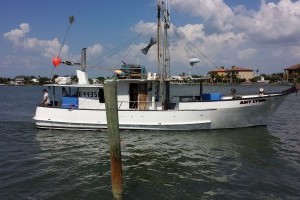
Center for Fisheries Electronic Monitoring at Mote (CFEMM)
The only program dedicated to developing & assessing electronic monitoring (EM) for the Gulf of Mexico commercial reef fish fishery
1600 Ken Thompson Parkway
Sarasota, FL 34236
Ph: (941) 388-4441
Hours: 10AM - 5PM
A 501(c)3 nonprofit organization.
The Phytoplankton Ecology program studies the ocean's phytoplankton community, with an emphasis on the West Florida Shelf in the Gulf of Mexico. Our staff focuses on the biology and ecology of phytoplankton, both as individual species and as a diverse community of many species interacting with each other, their environment, and other organisms.
Many phytoplankton species can produce harmful toxins and a primary focus of our group is to understand the dynamics of the red tide organism Karenia brevis, a dinoflagellate that forms harmful algal blooms in the Gulf of Mexico. This algae produces potent neurotoxins that, when the algae blooms, can kill fish, birds and marine mammals and can cause illness in humans that inhale aerosols or consume contaminated shellfish. We aim to identify the processes and factors that influence phytoplankton community dynamics, and lead to bloom formation and persistence. We also study factors that lead to the demise of a harmful algal bloom, possibly allowing the development of harmful algal bloom control and mitigation mechanisms that, in the future, may allow us to minimize bloom duration, reducing the impact to humans and natural resources.
The Phytoplankton Ecology program also runs a phytoplankton culture facility where we grow cultures of Karenia brevis and other phytoplankton, both toxic and non-toxic. This allows us to perform specific studies to better understand the biology, behavior and toxicity of these organisms.
Learn more about red tide in the Gulf of Mexico and other harmful algal blooms on our Facebook page.
Mote Aquarium is likely to be busy this week, with many timed-ticket entry slots selling out. Please purchase your tickets in advance to guarantee entry.
Mote Aquarium is open seven days a week at our normal hours, 9:30 a.m.–5 p.m. We hope to SEA you soon!